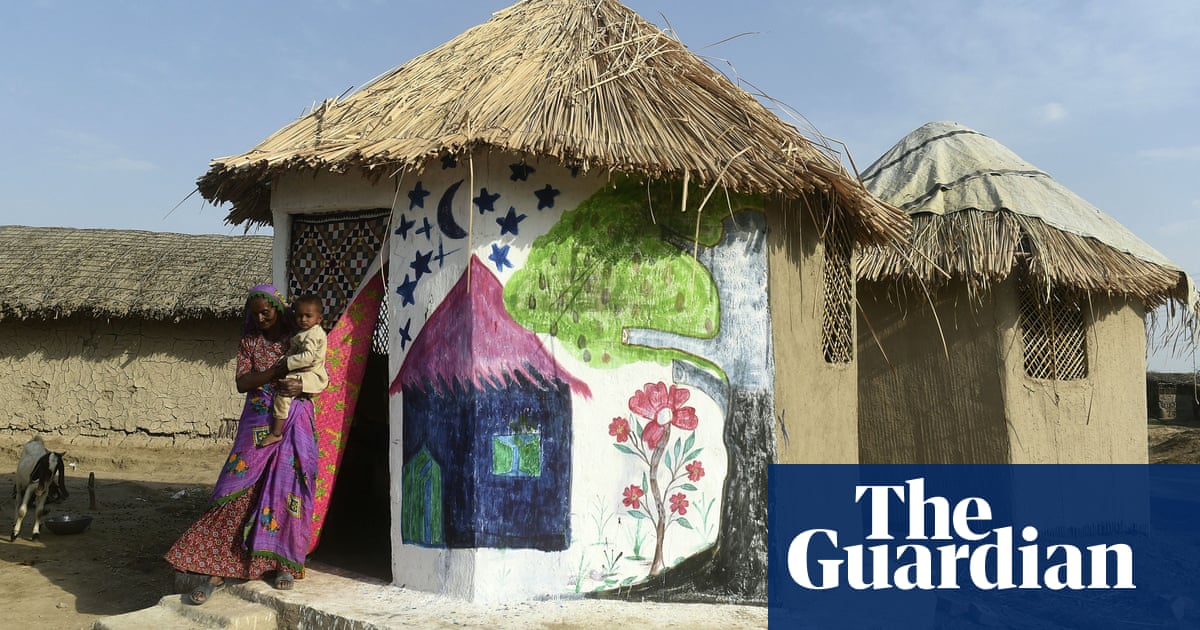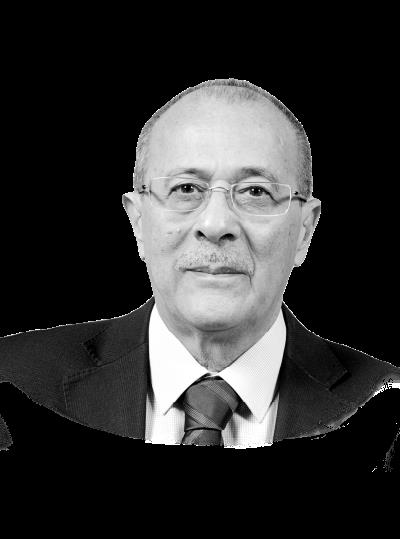
Ayear ago, Shani Dana’s mudbrick house was swept away in the worst floods on record to hit Pakistan. More than 1,700 people were killed and 900,000 homes damaged or destroyed. Sindh province, where Dana lives, was the worst affected.
While waiting for government money to rebuild her home in Wasram village, in the Tando Allahyar district, word reached Dana that the Heritage Foundation of Pakistan (HFP), founded by a renowned architect, Yasmeen Lari, was building one-room homes in neighbouring Pono village.
The buildings “looked like rounded chauhras [traditional huts], but were octagonal in shape and the walls were much sturdier,” says Dana.
The foundation agreed to help Wasram rebuild and in March the HFP team joined villagers to construct 50 new homes. Prefabricated bamboo frames were built on metre-high raised platforms. Walls made of bamboo canes were fixed and plastered with mud mixed with rice husk and lime, and radial-style conical roofs were fitted. Four solar panels, six water handpumps and 25 toilets were also built.
“This will not be swept away if the floods come again. It is not built at ground level, it’s airier and brighter since there is a window – ours didn’t have one before – and also looks much neater, since the walls and floor are plastered,” says Dana outside her new home.
“A loft can be built inside the room to accommodate extra trunks or space for sleeping; they can also add courtyards to extend the house,” adds Lari, a champion of sustainable, low-cost buildings, who designed the chauhras.
The HFP has helped build more than 5,000 chauhras since September. “In the next two months, I should be able to build another 2,600 homes,” says Lari, who is urging every villager who has built their home to help 10 others build theirs.
A year after the floods, tens of thousands of people are still waiting for help to rebuild. Organisations, like HFP and the NGO Karachi Relief Trust have been stepping in.
About 250 of the 1,000 one-room homes KRT is building in villages across Sindh, Punjab and Balochistan provinces should be finished by the end of August. The homes are being built using burned-earth bricks or cement blocks with roofs made of steel girders and precast cement slabs. “The houses we built in 2010 have survived and aged well,” said Ahsan Najmi, the trust’s architect.
In Sindh province, the authorities only began disbursing the first tranche of the $727m (£577m) earmarked by the government for reconstruction – $500m from a World Bank loan and $227m from the Sindh authorities – in February.
“It took time to mobilise resources, to orient them, so that everything gets done accurately and transparently,” says Khalid Mehmood Shaikh, director of the Sindh People’s Housing Foundation (SPHF), which is overseeing the rebuilding work.
SPHF hopes 50,000 one-bedroom “resilient” cement, brick and steel homes will be livable by September. It has enough money to cover the cost of 350,000 homes, but needs at least $500m to finish all the work. “Once we have something to show on the ground, I’m hoping there will be a lot of donor support, as a lot of people have shown interest,” says Shaikh.
However, Lari questions the cost of the project and believes rebuilding could be cheaper and more sustainable. The houses SPHF is asking people to build cost 300,000 rupees (£825) each, about the same amount KRT’s homes are costing.
HFP homes, which are made of fully cured bamboo, the ends of which are covered with lime to protect them from termites, cost just 25,000 rupees. The lime in the plaster and bamboo also absorb and store carbon from the air, helping mitigate the effects of the climate crisis.
“I’m not doing anything new. I may have tweaked the design, but the material used is age-old, indigenous and easily available,” says Lari, who began her humanitarian work after a 7.6-magnitude earthquake shook northern Pakistan in 2005.
“People are now turning to these low-cost materials that we have been working with for nearly two decades,” says Naheem Hussain Shah, the HFP’s project manager.
The foundation recently worked with Islamic Relief to build 250 one-room homes, with toilets, in Balochistan’s Harnai district. It has also made three one-room schools for Unicef in Sindh. “The design was different, but the material is the same,” says Shah.
Environmental architect Shahid Khan, of the Indus Earth Trust, says building authorities cannot see beyond concrete and steel as “acceptable material” when building homes in urban areas. Using “good indigenous materials” such as bamboo correctly can produce buildings that can last 20 to 30 years.
Lari, who is this year’s recipient of the Royal Institute of British Architects’ royal gold medal, one of the world’s highest honours for architecture, says she would like the government to adopt sustainable alternatives to housing. “I am happy to provide any assistance if they would like to provide a better quality of life for the poor,” she says. “Our design is open source, available free. We can also identify many trained master artisans. It is up to the government. We are there to further the cause.”
An essential part of Lari’s work is involving communities in the rebuilding process so they learn a trade. While the foundation pays for the bulk of the materials and brings its expertise, local people collect the mud and rice husk, and provide the labour.
Khamo Umro, from Pono village, now earns 800 rupees a day rebuilding homes, double what he made as a farmhand. “The floods have been a blessing in disguise. For years it was my wife who was the primary earner as my work as a farmhand was off and on. But since February, I have been earning every day, which is a huge relief,” he says.
Yet, Lari doesn’t think her cheaper, alternative way to build will garner much interest from the authorities. “It uses very low-cost materials and, since the approach is participatory, it does not rely on intermediaries, so there is no possibility of pilferage or overheads.”












